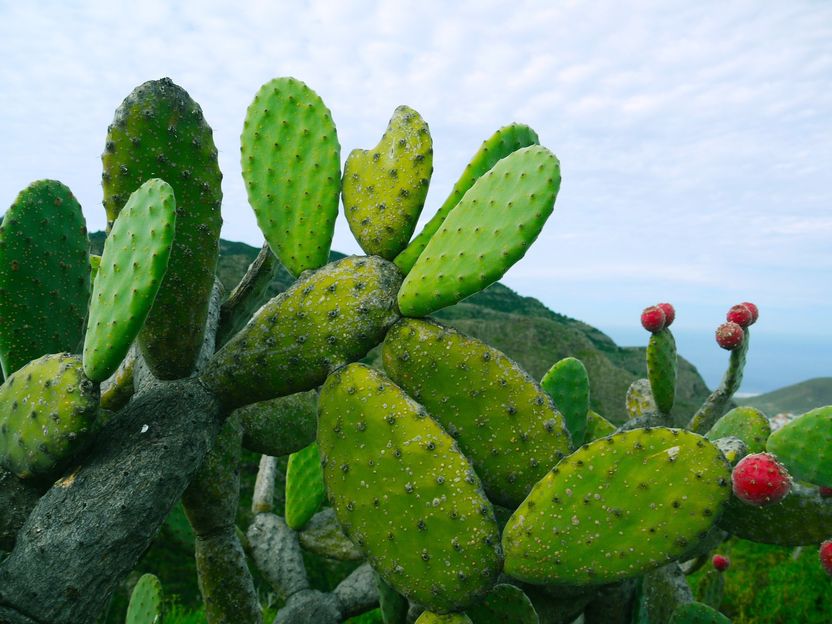Oil from cactus seeds - valuable rarity
Phenolic compounds in cactus seed oil
Advertisement
A large number of small seeds are found in the fruits of the cactus (Opuntia ficus-indica). The oil extracted from these cactus seeds is one of the most expensive vegetable oils - with prices up to 500 euros per liter. With almost 80 percent unsaturated fatty acids such as linoleic and oleic acid and its secondary plant substances, cactus seed oil is particularly interesting in terms of nutritional physiology. At the Institute for Cereal Safety and Quality, the composition of phenolic compounds of cactus seed oil has been studied for the first time and the influence of roasting the cactus seeds on the composition of phenolic compounds has been considered.

Bild von MonikaP auf Pixabay
In addition to fatty acids bound in triglycerides, cactus seed oil contains minor components such as tocopherols, phytosterols and also phenolic compounds. Substances which are present in very small amounts but are of great importance. The phenolic compounds are antioxidant active and have positive nutritional properties. In addition, the composition of phenolic compounds can be used to prove the authenticity of vegetable oils.
The prickly pear belongs to the Cactaceae family. The plant originally comes from the tropical regions of Central America and later arrived in Mediterranean areas via Spain. Today the plant grows in arid and semi-arid zones of Africa, the Middle East and Asia. The edible part of the fruit contains a relatively large number of seeds, whose weight can range from 30 to 40 percent of the dried fruit. However, the individual seeds have a weight of only between 15 and 20 milligrams and a low oil content of between 5 and 15 percent compared to conventionally used oilseeds such as rapeseed (45 percent) or sunflower (20 percent). About 30 kilos of seeds from about one ton of fruit are needed to produce one liter of cactus seed oil.
Cactus seeds from different Moroccan sites (Houceima, Bejaad, Rhamna, Sidi Ifni, Ait Baha and Tiznit) were used for the studies on the content and composition of phenolic compounds. The oil was freshly pressed from the seeds using an auger press to ensure that no changes occur during storage and transportation. In addition, the seeds from the different sites were roasted at 110 °C for 10, 20, 30 and 40 minutes and then the oil was also pressed off.
The phenolic compounds were isolated from the cactus seed oils by liquid-liquid extraction and identified by HPLC-ESI-qToF-MS measurements. The compounds were subsequently quantified by HPLC-DAD. A total of seven phenolic compounds were found in the oils, which can be assigned to three compound classes: three hydroxybenzaldehyde derivatives (4-hydroxybenzaldehyde, vanillin, syringaldehyde), three hydroxycinnamic acid derivatives (p-coumaric acid, p-coumaric acid ethyl ester, ferulic acid) and one hydroxycinnamic aldehyde derivative (ferulaldehyde). The major compounds present in the oils from the different regions were vanillin, syringaldehyde and ferulaldehyde with the highest contents at Bejaad site (32.4, 12.3 and 5.7 mg/kg, respectively). The contents of the oils showed a wide variation among the different sites, probably due to genetic differences among cultivars, weather conditions, harvest period, seed storage conditions or manufacturing conditions. At this stage it is not possible to say whether the patterns of phenolic compounds are characteristic of the different locations. For this, a larger number of oils of the sites have to be investigated.
Mild roasting of the seeds at 110 °C to achieve a mildly roasted taste and smell of the resulting cactus seed oil leads to an increase in the phenolic compounds p-coumaric acid ethyl ester, feruladehyde, p-coumaric acid and syringaldehyde with increasing roasting time. In particular, the content of ferulaldehyde increases from about 5 mg/kg to over 70 mg/kg as a result of roasting over a period of 40 minutes. For syringaldehyde, the roasting process over 40 minutes also leads to an increase in content from about 10 mg/kg to about 30 mg/kg, while the increase is much less pronounced for the other phenolic compounds. By isolating lignin from the hull of cactus seeds and subsequently heating the lignin at 110 °C, it was shown that especially the thermal degradation of lignin from the hull of the seeds during the roasting process is responsible for the increase of phenolic compounds in the oil.
The results of the project describe for the first time the phenolic compounds of cactus seed oil. This knowledge can be used to ensure the authenticity of this expensive vegetable oil using the pattern of phenolic compounds. It has also been shown that the roasting process results in the degradation of the lignin of the hull of cactus seeds to phenolic compounds and these are transferred to the oil during pressing. Thus, the roasting process leads to an accumulation of phenolic compounds in the cactus seed oil.
Note: This article has been translated using a computer system without human intervention. LUMITOS offers these automatic translations to present a wider range of current news. Since this article has been translated with automatic translation, it is possible that it contains errors in vocabulary, syntax or grammar. The original article in German can be found here.




























































